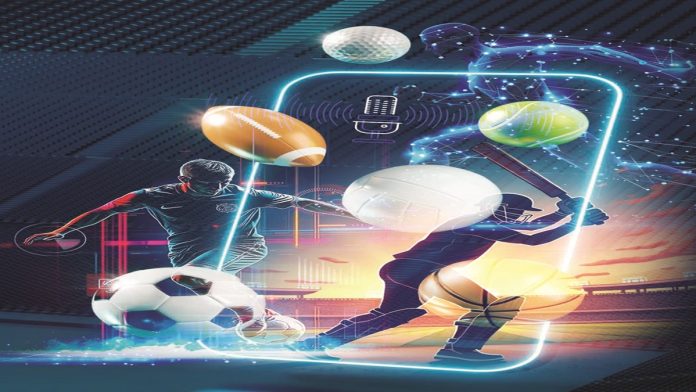The experience for sports enthusiasts has seen a massive enhancement, with the integration of AI into fan engagement. From team scouting and recruitment to game analysis, AI is now an integral part of professional sports across the board.
When in 2024 Australian cricketer Steve Smith appeared on Star Sports during the Indian Premier League season speaking in Hindi and Tamil, with a little switch at the bottom of the screen indicating that the AI translator was on — sports fans and netizens went wild on Instagram and X. Endless comments and appreciation pooled in for the AI translation feature, as Smith in front of the camera spoke in perfect Hindi with none of the Australian accent.
The experience for sports enthusiasts has seen a massive enhancement, with the integration of artificial intelligence into fan engagement. From team scouting and recruitment to game analysis, AI is now an integral part of professional sports across the board. Alongside the athletes and those in the sector, however, AI is amplifying the sports watching experience for viewers as well.
Fans want custom experiences
In a recent global study done by Capgemini surveying 12,017 sports fans across 11 countries namely, Australia, Brazil, Canada, France, Germany, Italy, Japan, Spain, Sweden, the UK, and the US — 64% of fans want AI to provide updates customised to their preferences, a similar number want to compete against well-known players in a virtual space during live games, and 58% would like to replay matches using ‘what-if’ scenarios. Just over a quarter (27%) are even willing to pay a premium for these AI-driven, interactive experiences.
More recently, AI is also being used to personalise every sports viewer’s interaction and engagement with the channel. Implementations of AI-powered personalisation systems are prevalent, such as ESPN, DAZN, and OneFootball all use AI to tailor content delivery across different devices and user environments.
ESPN leverages AI to generate individualised highlight reels, while DAZN utilises predictive analytics to recommend upcoming live events based on historical user engagement. They analyse viewing habits, preferences and favourite teams of the audiences and through these fans can receive personalised highlight reels or recap videos focusing on specific players, teams, or game moments they care about most.
OneFootball, on the other hand, uses multilingual speech recognition systems to provide localised news and commentary, pushing fan interaction with both global and local sports teams. These examples underscore the growing reliance on AI as a means of maintaining competitiveness and relevance in an oversaturated digital media environment.
On-ground and in-game engagement is evolving
In India, earlier this year during the IPL season, fans were urged to participate in an online exercise and upload their photos thereafter, to be featured alongside the players in an image to be displayed on a digital billboard of the Royal Challengers Bengaluru in the city. Several participated, registering online, uploading their photos, and travelling to the specific billboards to see themselves in a generated image of themselves alongside the RCB players.
As aforementioned, Star Sports made a similar move in 2024, using AI to introduce a language feature that would allow audiences from across the country to enjoy the broadcast and commentary in their language of choice. A statement from Star Sports technology partner ElevenLabs at the time said, “Our goal is to break language barriers in cricket by using AI to regionalise content. Cricket is a unifying force in India, where fans admire players from around the world. Translating spoken content into regional languages helps fans connect with their favourite players and makes commentary accessible to more people.”
Other features like highlights with graphics showing the pace of the ball, speed of the bowler, placements on the pitch and others had been tried and tested on audiences years ago, to enthused reactions from cricket fanatics.. Sports channels are now looking at similar but more elevated enhancements to their content, to retain and grow their audience demographics.
The National Football League, for American professional football, also pulls off entirely AI generated, augmented reality broadcasts of the games on Nickelodeon. In these live broadcasts, the viewers will see their favourite Nickelodeon cartoon characters on the actual football field doing the halftime report and the commentary as well.
On the F1-22 video game, players can compete as their favourite racing drivers with other racing drivers, with the speed and technique of the real driver who takes the tracks.
Most recently, characters from the Brad Pitt-starrer F1: The Movie were also added to the roster for players with the new paid edition of the game. FIFA has had a similar interface for ages too, where a player can be in a team with their favourite footballers, play in their jerseys and even on occasion beat them during game play.
With the creeping, or rather speeding advent of AI in all fields, more and more such innovations across broadcast channels and online spaces surrounding sports will emerge, aiding to make the sports fans’ engagement in the sport and the players more accessible, more interactive, and definitely more entertaining.
